10 Ways Firmographic Data Enhances Market Research Strategies

10 Ways Firmographic Data Enhances Market Research Strategies
Overview
Firmographic data serves as a vital feature in enhancing market research strategies. By providing critical insights into organizational characteristics such as industry, size, and location, it offers significant advantages that allow for more targeted and effective marketing efforts. This data empowers businesses to refine their outreach and improve personalization. Ultimately, these benefits culminate in maximizing return on investment (ROI) by tailoring campaigns to meet the specific needs of their target audiences.
How can your organization leverage firmographic data to enhance its marketing strategies? By understanding these characteristics, companies can create more impactful campaigns that resonate with their audiences.
Introduction
The increasing reliance on data-driven strategies has transformed the landscape of market research, positioning firmographic data as an invaluable asset for businesses. This specialized information—detailing organizational characteristics such as industry, size, and location—empowers companies to refine their marketing efforts and enhance decision-making processes.
But how can organizations effectively harness this data to improve their outreach and foster long-term relationships with clients?
Exploring the multifaceted applications of firmographic data reveals its critical role in shaping successful market strategies and driving sustainable growth. By leveraging these insights, businesses can not only enhance their immediate marketing tactics but also build lasting connections with their clientele.
Initial Data Offering: Access High-Quality Firmographic Datasets
The Initial Data Offering (IDO) functions as a centralized hub for that are crucial for . By curating unique datasets, such as TikTok Consumer Sentiment Information and Corporate Carbon Footprint ESG Metrics, IDO provides businesses, researchers, and organizations with access to relevant insights that inform decision-making across various sectors. The platform features comprehensive datasets detailing organizational characteristics, including:
- Industry
- Employee count
- Geographical location
- Revenue
These attributes are crucial for understanding and improving outreach initiatives, ultimately leading to more .
As the global data marketplace continues to expand, with a projected compound annual growth rate of 25.0% from 2023 to 2030, the importance of is becoming increasingly evident. Companies that leverage these datasets can significantly and conversion rates, positioning themselves for sustainable growth in competitive environments. IDO's commitment to quality and its community-focused strategy ensure that users can access the latest trends and insights, empowering them to make informed choices that enhance their competitive positioning.
Have you considered how these datasets could benefit your market research efforts? Fill out the form to learn more about our datasets and discover how they can elevate your strategic initiatives.
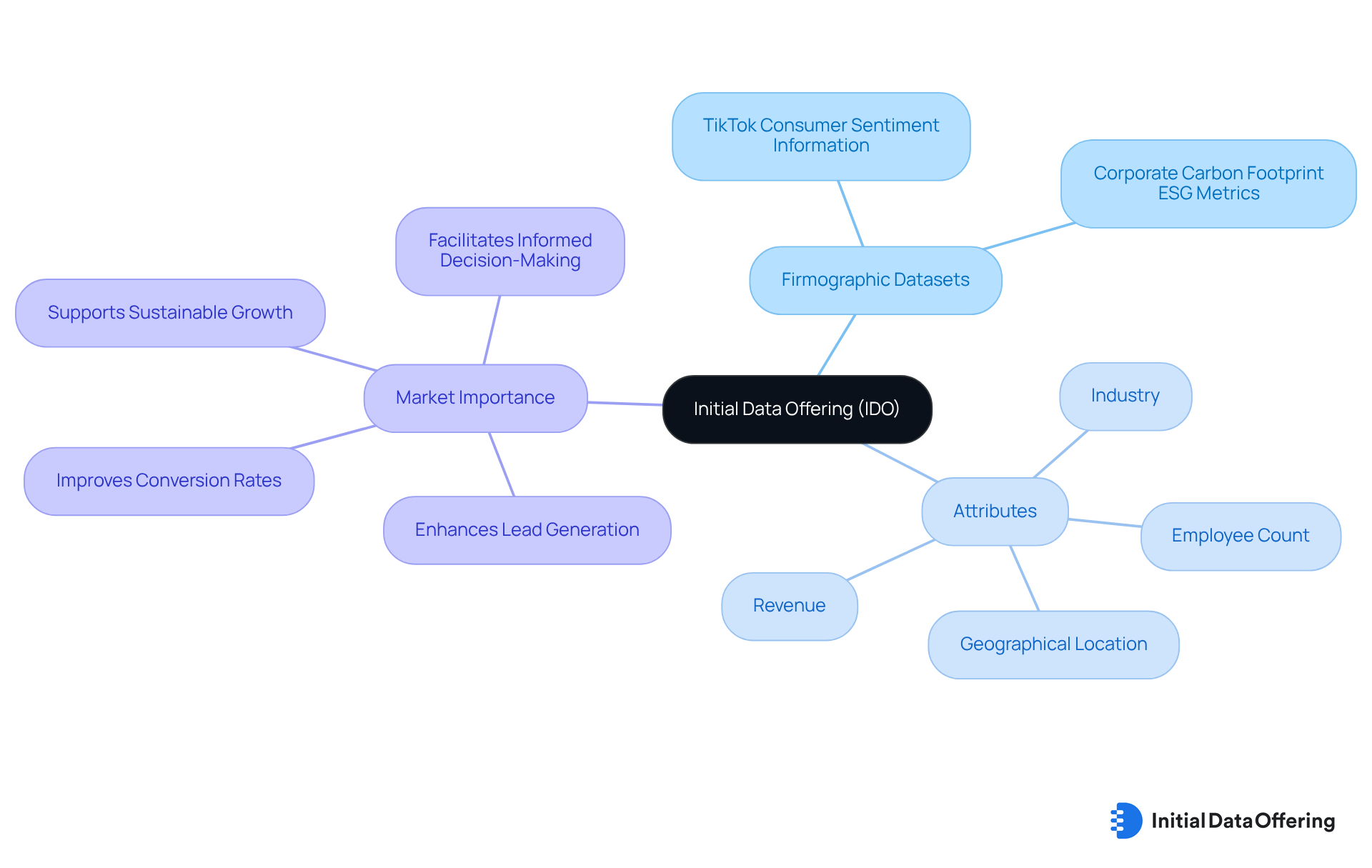
Understanding Firmographic Data: Definition and Importance
includes the attributes of organizations, such as their industry, size, revenue, location, and employee count. These features are essential for businesses, as they provide valuable insights into . Understanding these characteristics allows companies to effectively, thereby within the industry.
Particularly in , targeting the right organizations can significantly impact sales outcomes. How can your organization leverage this information to improve its ? By , businesses can not only identify promising leads but also to meet the specific needs of their target audience.
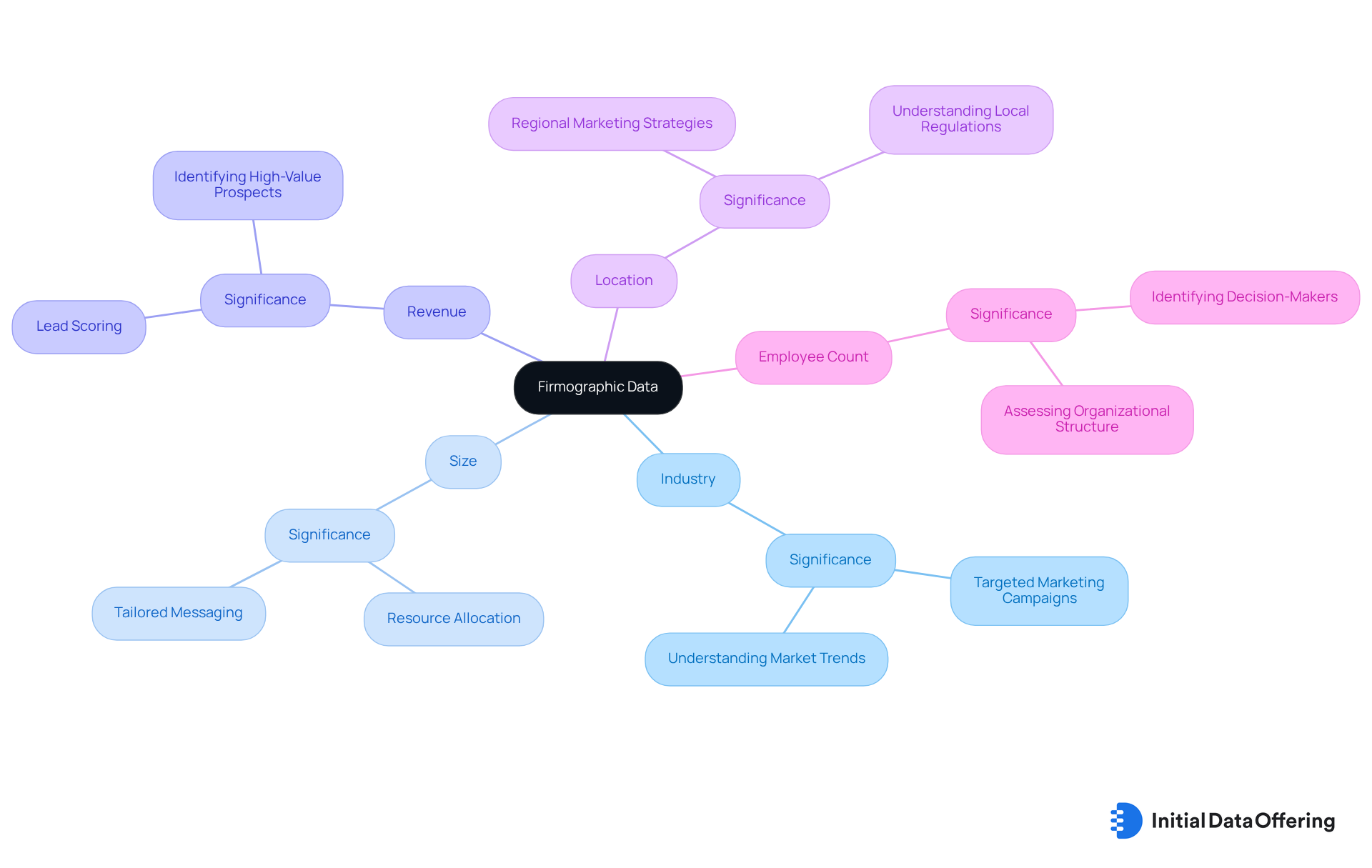
Applications of Firmographic Data: Enhancing Market Research Strategies
serves as a robust resource for enhancing research strategies across various dimensions. It allows businesses to pinpoint target markets by analyzing firmographic characteristics such as company size, industry, and location—elements that are critical for . For instance, a tech company might leverage firmographic data to categorize its audience into small startups and large enterprises, enabling tailored messaging that addresses the unique requirements of each group.
Additionally, this information plays a vital role in . By comprehending the firmographic details of competitors, businesses can uncover market gaps and identify opportunities for differentiation. This insight informs product development, ensuring that offerings align with the specific demands of targeted segments.
Looking ahead to 2025, the utilization of firmographic data will be increasingly essential as companies embrace account-based approaches. Detailed insights into key accounts will empower firms to that resonate with decision-makers, ultimately . As Nadja Böhme, CEO of Factworks, articulates, " has always been about , but in today’s environment, it’s equally about proving its worth in measurable terms." This statement underscores the growing necessity of , a demand that is rising among stakeholders.
Moreover, with 87% of research teams employing synthetic information reporting high satisfaction with its outcomes, leveraging firmographic insights will be essential for organizations aiming to stay competitive. By linking research insights to tangible , firms can secure essential support and elevate the role of market research within their organizations.
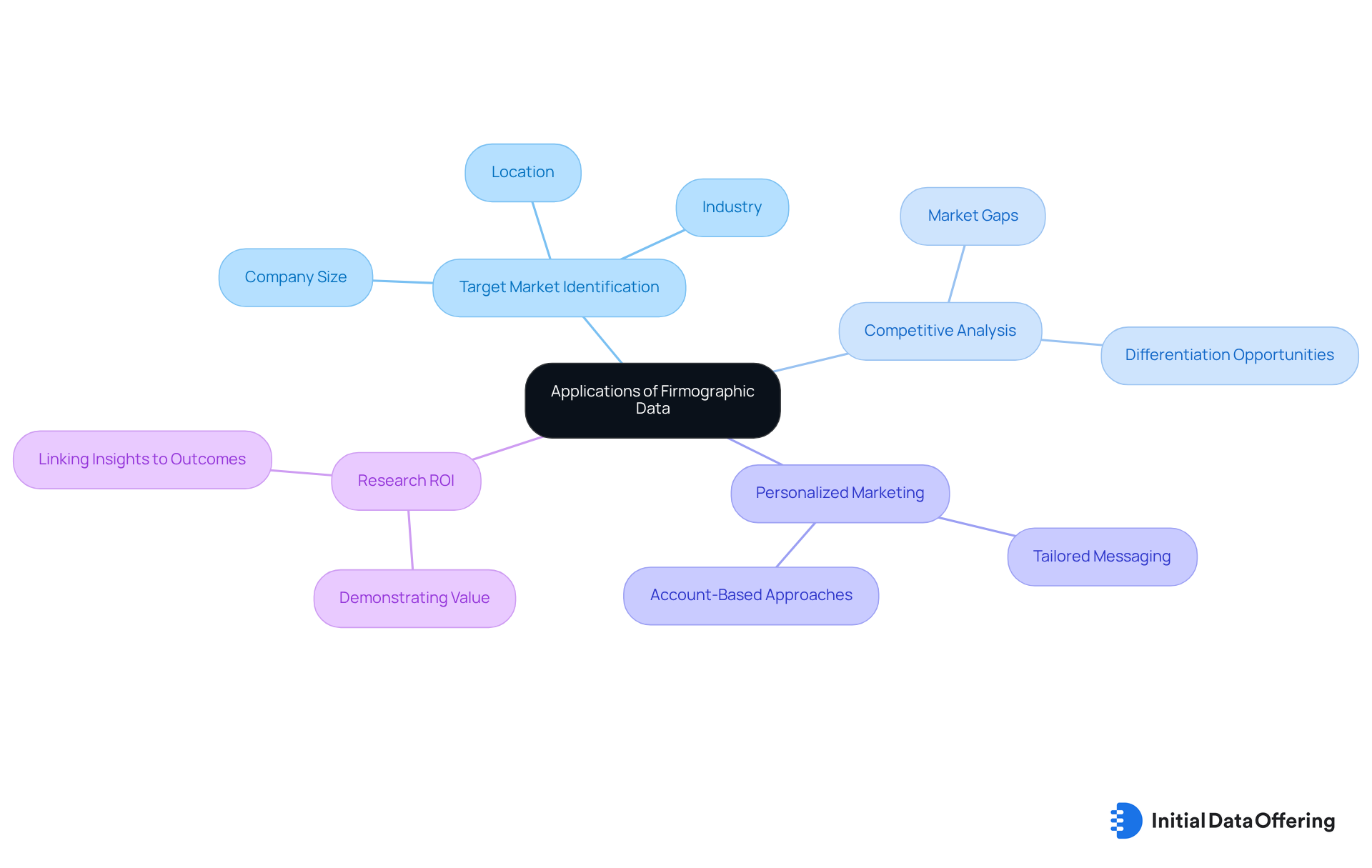
Improving Personalization: The Role of Firmographic Data in Marketing
Enhancing personalization in promotional strategies relies heavily on firmographic information. By analyzing the characteristics of target organizations, marketers can craft tailored messages that resonate with specific audiences. For instance, a software company could leverage demographic insights to identify businesses within a particular sector. This enables them to create promotional materials that address the distinct challenges faced by those organizations. Such a but also significantly increases the likelihood of conversion.
Statistics reveal that customized promotion can lead to a . Additionally, account-based marketing (ABM) campaigns can enhance win rates by by 20%. These figures underscore the effectiveness of utilizing . Furthermore, over 90% of B2B purchasers expect a tailored experience, highlighting the crucial role of .
Incorporating is also vital for efficient targeting and personalization. This integration further amplifies the impact of in promotional activities.
How can your organization harness these insights to refine its marketing efforts? By embracing these strategies, businesses can significantly improve their promotional outcomes.
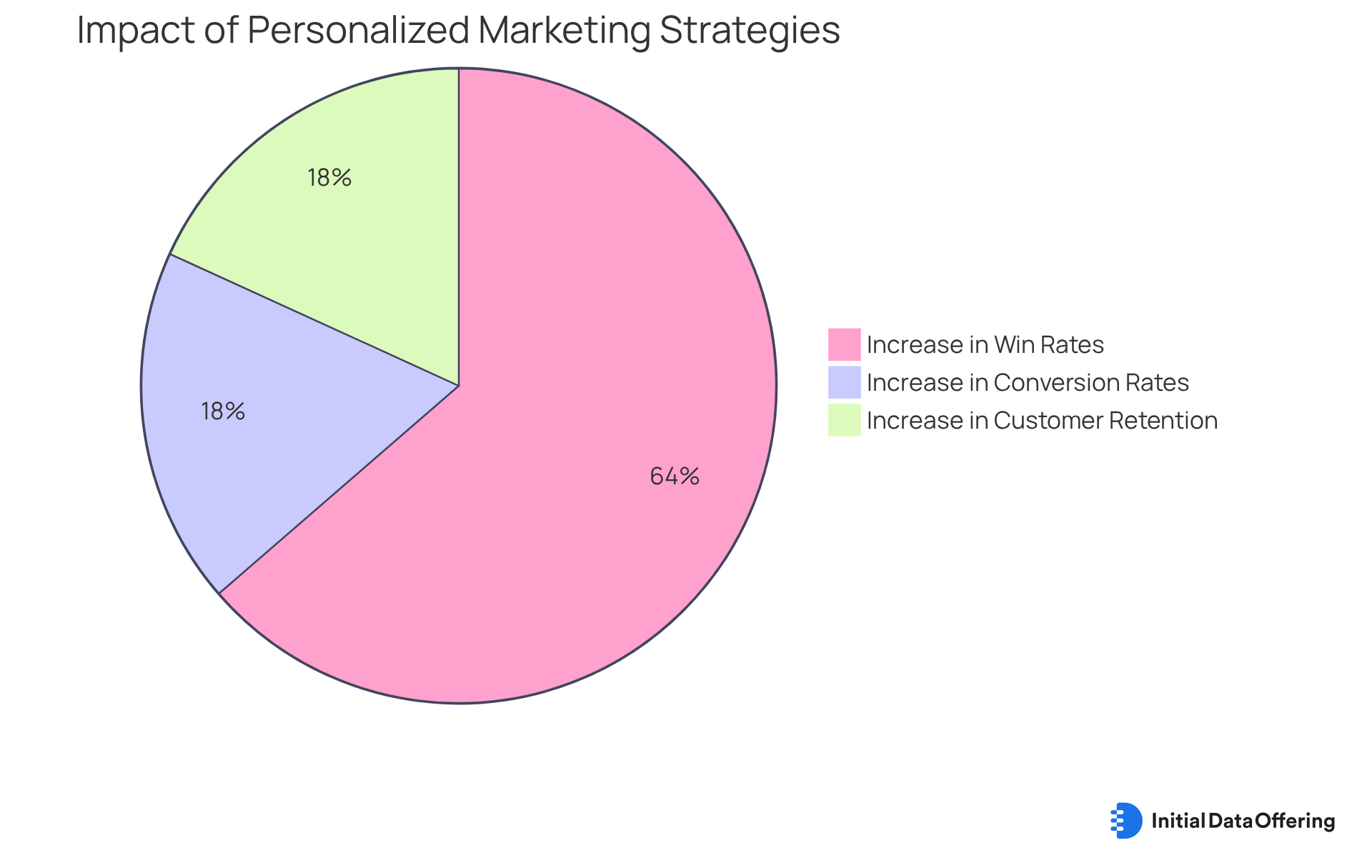
Maximizing ROI: Leveraging Firmographic Data for Effective Campaigns
Utilizing serves as a powerful strategy for enhancing ROI in . By precisely targeting organizations with tailored messages, businesses can significantly minimize wasted ad spend while improving conversion rates. For example, companies that leverage to identify high-potential prospects can allocate resources more efficiently, ensuring that promotional efforts focus on the most promising opportunities. This strategic focus not only enhances campaign effectiveness but also drives overall . In fact, 87% of from , which often rely on to customize outreach.
Moreover, ABM has and opportunities by 70%, illustrating the tangible benefits of utilizing company profile information to inform promotional strategies. can also lead to a 28% increase in deal speed, highlighting the importance of into marketing campaigns. As companies continue to adapt to the evolving landscape, leveraging organizational information will be crucial for achieving sustainable growth and success.
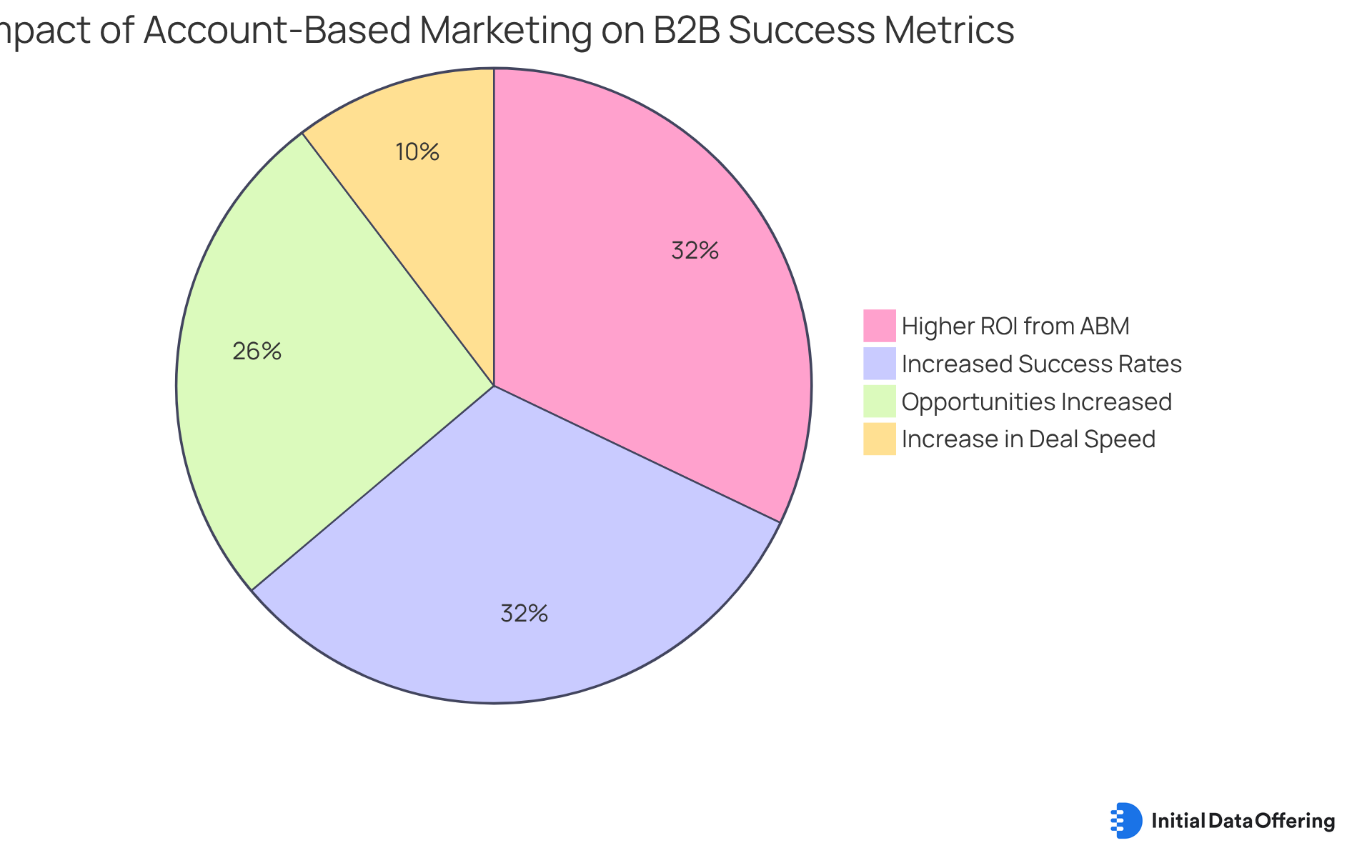
Fostering Long-Term Relationships: The Value of Firmographic Data
Nurturing long-term relies heavily on . By consistently analyzing and updating this data, businesses can stay attuned to changes within their , including leadership transitions and shifts in strategic focus. This proactive approach allows companies to engage clients with tailored solutions that address their evolving needs. Research indicates that organizations leveraging see a marked increase in , with 80% of future revenue stemming from just 20% of current clients.
Moreover, effective management of not only enhances engagement but also promotes , as clients feel recognized and valued. For instance, businesses that regularly refresh their company profiles can adapt their with client changes, ensuring their offerings remain relevant. This adaptability is crucial in today's dynamic market, where 75% of consumers have due to factors such as availability and pricing.
By concentrating on company-specific information, businesses can forge stronger, more resilient connections with their clients, ultimately fostering sustainable growth. How can your organization leverage to enhance client relationships? Consider the implications of these strategies in your own context.
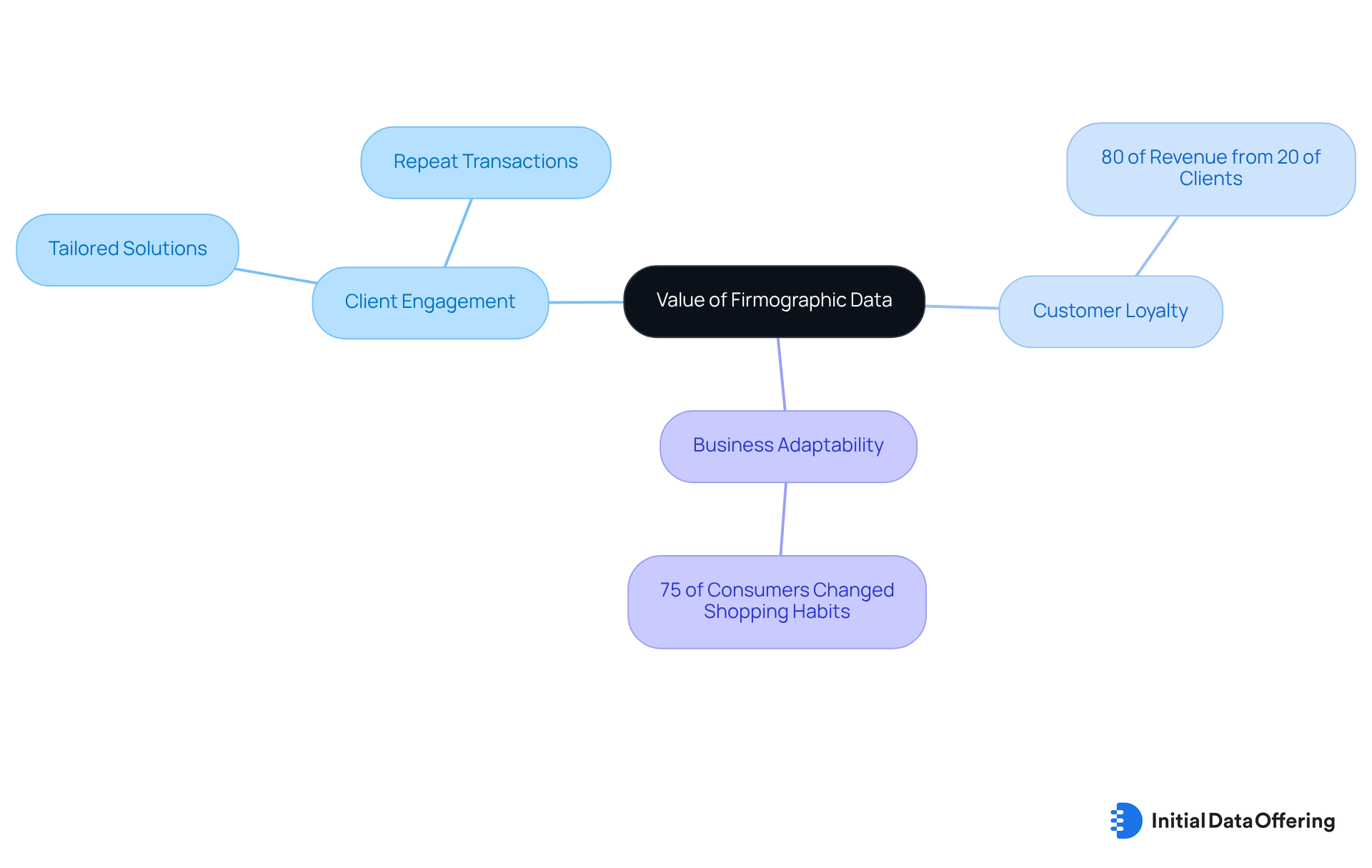
Sources of Firmographic Data: Where to Find Reliable Information
Trustworthy sources of encompass:
- Public business registries
- Industry reports
- Specialized information providers
For instance, platforms like LinkedIn, Dun & Bradstreet, and ZoomInfo feature extensive datasets that include firmographic information, which can significantly enhance . These resources not only provide but also offer advantages such as real-time updates and . By leveraging , businesses can benefit from precise and current company information, fostering informed decision-making.
How can these resources be integrated into your business strategy to maximize their value?
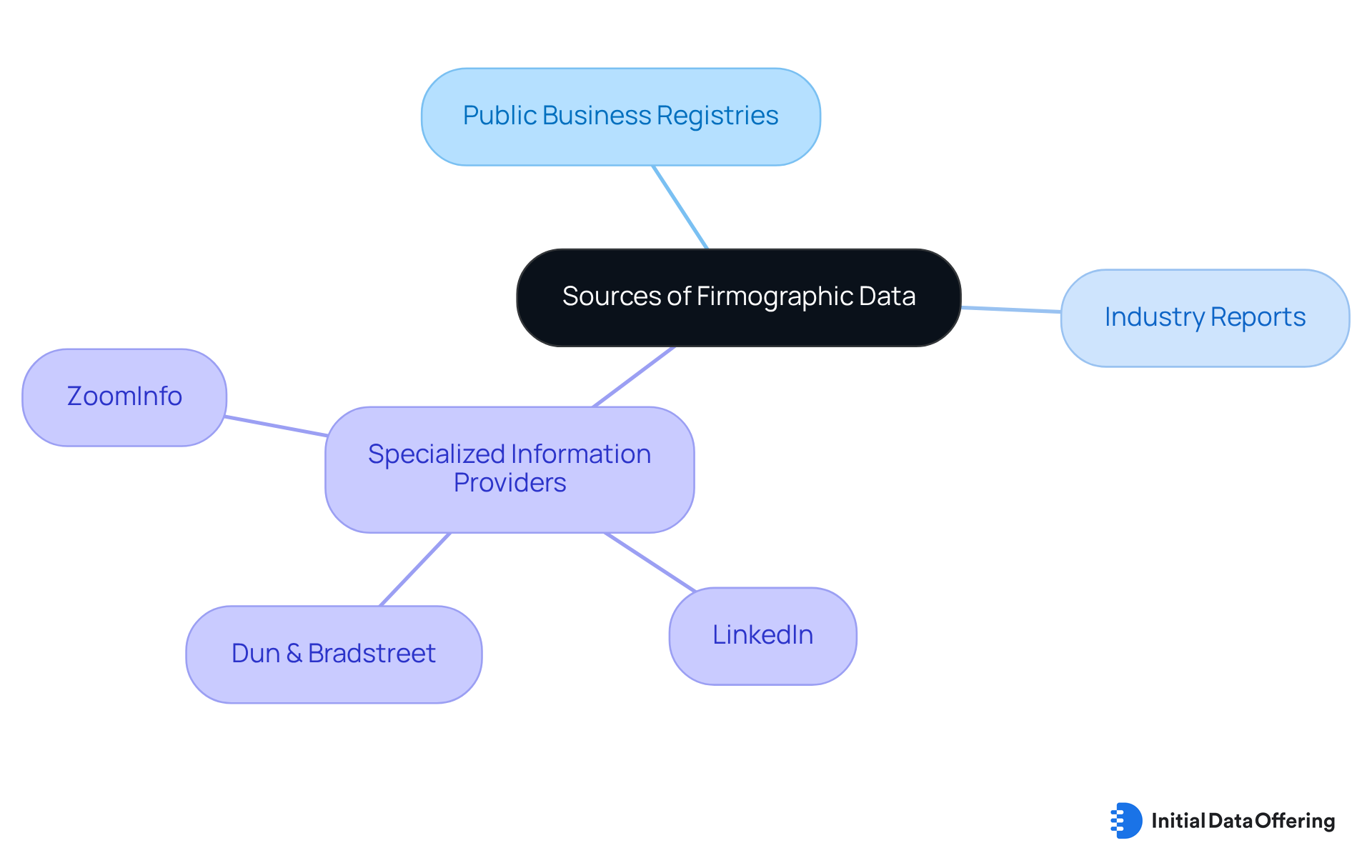
Analyzing Firmographic Data: Techniques and Best Practices
Examining necessitates a structured approach to yield precise and actionable insights. A fundamental feature of this process is segmenting information based on . The advantage of employing , like , lies in their ability to assist analysts in , thereby rendering intricate information more accessible and comprehensible. For instance, companies that utilize platforms such as Tableau or Microsoft Power BI have effectively visualized firmographic data, revealing business opportunities and enhancing decision-making processes.
Furthermore, the application of , including clustering and , confirms findings and enhances the reliability of insights derived from the data. Regularly updating datasets is essential to reflect market dynamics, ensuring that analyses remain relevant and actionable. As Gartner forecasts, by 2027, 95% of sellers' research workflows will commence with AI-driven tools, underscoring the importance of integrating .
By adhering to these best practices, analysts can extract meaningful insights that not only but also improve marketing effectiveness and foster stronger connections with target audiences. How might these techniques influence your approach to data analysis? Consider the potential benefits of implementing such strategies in your work.
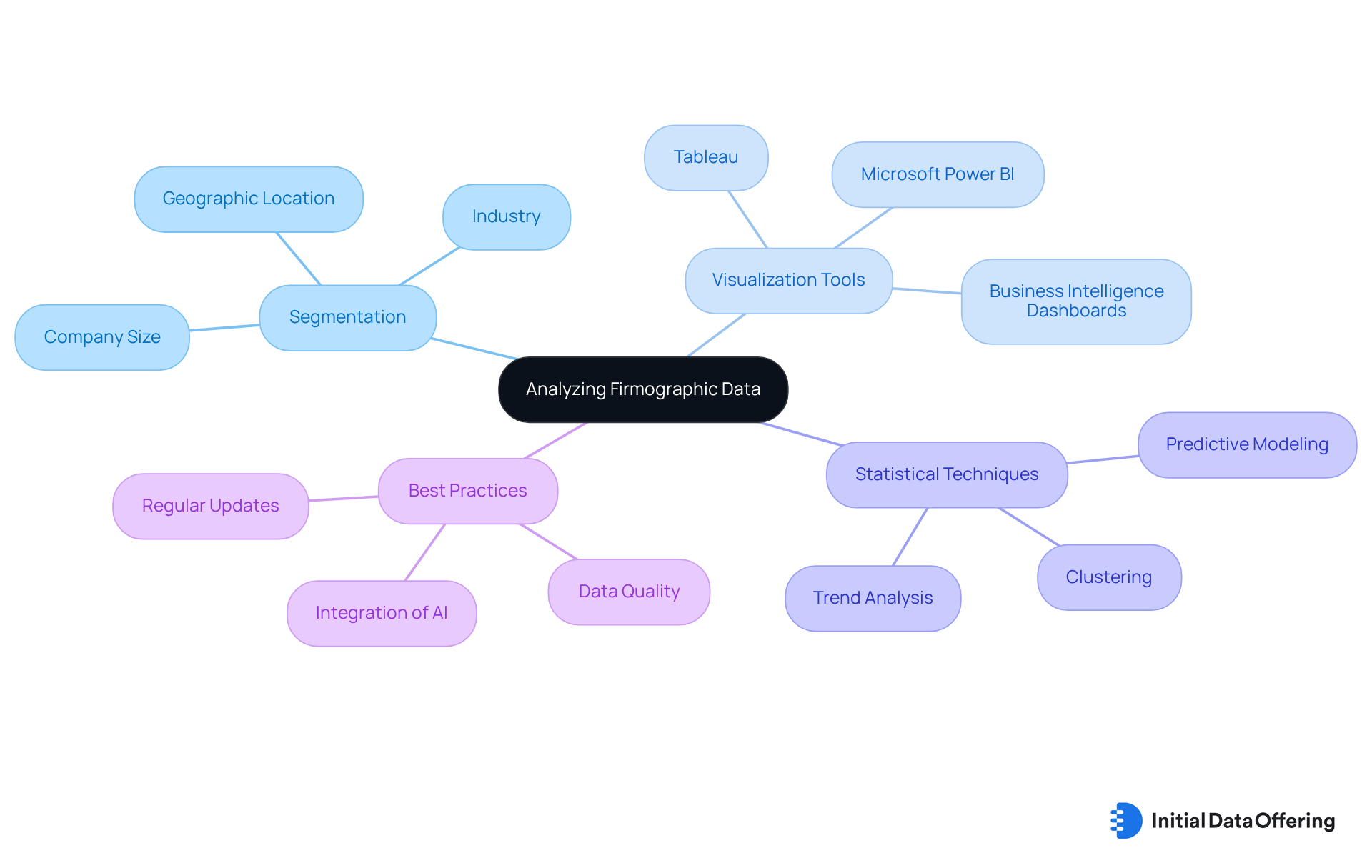
Challenges in Using Firmographic Data: Common Issues and Solutions
While is invaluable for organizations, it also presents several challenges. Common issues include:
- Accuracy
- Completeness
- Timeliness of the data
To address these challenges, companies can:
- Invest in
- Regularly review their datasets
- Implement
Additionally, leveraging technology such as can significantly enhance and streamline the analysis process. By proactively addressing these challenges, organizations can maximize the value of their , ultimately leading to more informed decision-making.
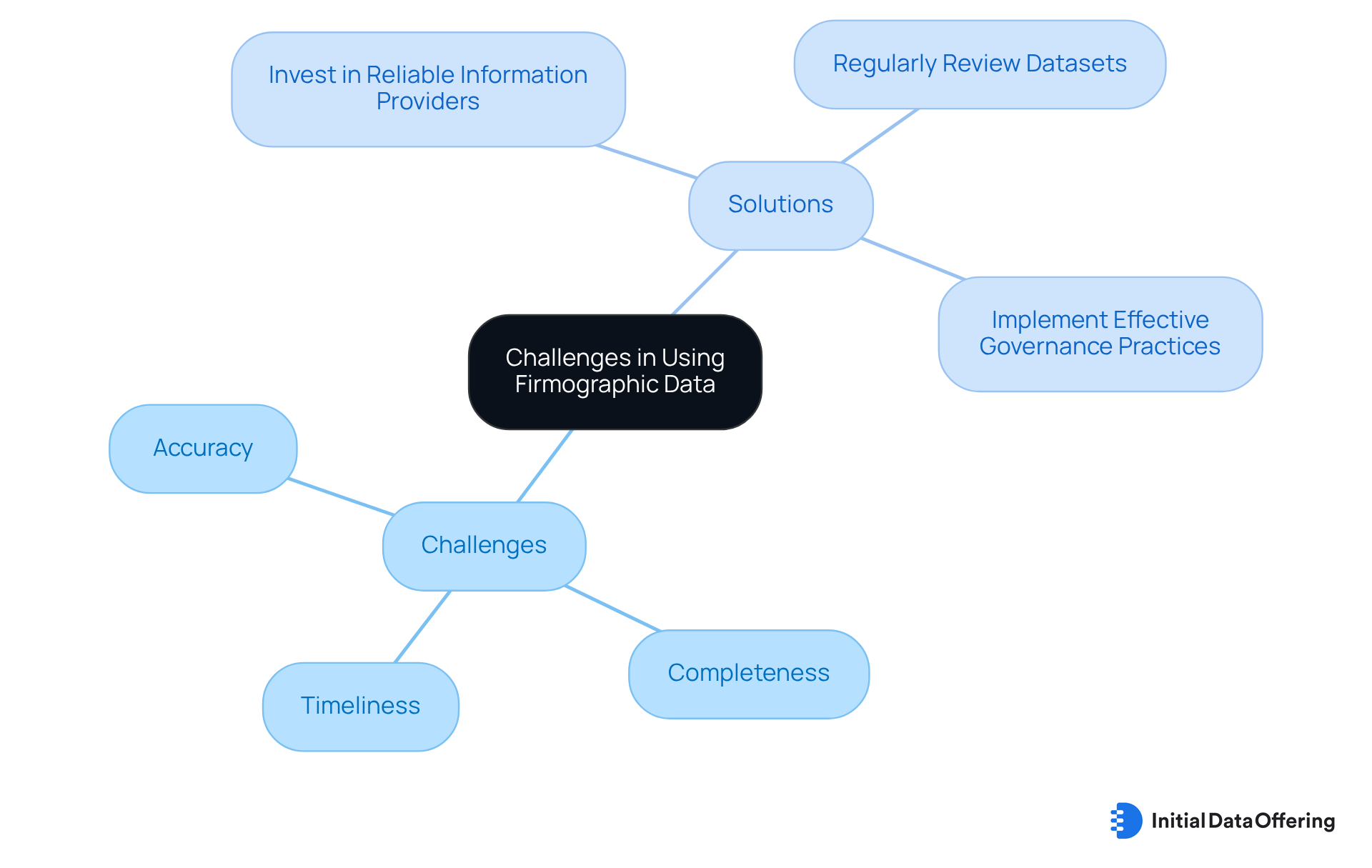
Key Takeaways: Essential Insights on Firmographic Data for Analysts
In summary, serves as a powerful tool for enhancing . By grasping its definition, applications, and sources, analysts can leverage this information to improve personalization, maximize ROI, and cultivate . Moreover, understanding the challenges and best practices for analysis ensures that businesses can effectively utilize to drive .
The significance of in information gathering, including anonymized information collection and secure storage solutions, is crucial for maintaining and complying with privacy regulations. Additionally, the integration of qualitative and quantitative methods enriches the understanding of customer motivations and preferences, providing a more comprehensive view of market dynamics.
Statistics reveal that 80% of companies experience revenue growth due to real-time analytics, underscoring the importance of efficiently utilizing demographic information. Expert insights suggest that successful brands will be those that can effectively merge both qualitative and quantitative research methods, leading to a more thorough understanding of their customers.
Case studies illustrate the tangible benefits of employing company-related information, showcasing effective strategies that have led to improved targeting and engagement. For instance, businesses that have adeptly utilized demographic insights report notable increases in campaign effectiveness and customer satisfaction.
In conclusion, the use of firmographic data enhances market research and empowers analysts to make informed, strategic decisions that align with the evolving needs of consumers and the dynamics of the market.
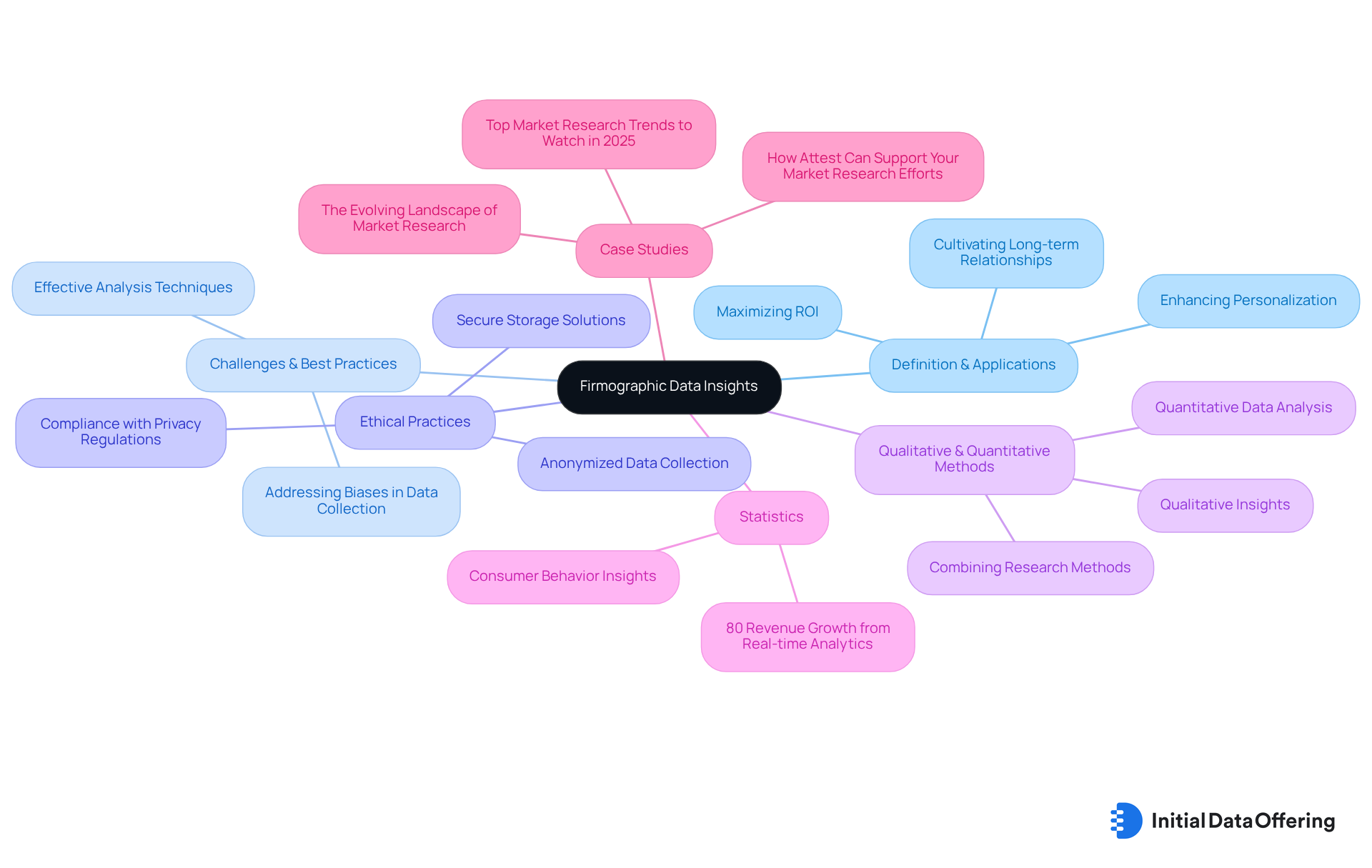
Conclusion
Utilizing firmographic data is essential for enhancing market research strategies and driving informed decision-making. By understanding the characteristics of organizations, businesses can tailor their marketing efforts, optimize lead generation, and ultimately secure a competitive edge in their respective markets.
The article highlights the various dimensions in which firmographic data can be applied, including:
- Enhancing personalization in marketing
- Maximizing return on investment (ROI)
- Fostering long-term client relationships
It emphasizes the importance of:
- Accessing high-quality datasets
- Employing effective analysis techniques
- Addressing common challenges associated with data accuracy and completeness
These insights underline how leveraging firmographic data can significantly improve marketing effectiveness and customer engagement.
In a rapidly evolving business landscape, embracing firmographic data is not just advantageous but necessary for sustainable growth. Organizations are encouraged to explore reliable sources of firmographic information and integrate advanced analytics into their strategies. By doing so, businesses can unlock the full potential of market research, ensuring that their promotional efforts resonate with their target audiences and adapt to changing market dynamics.
Frequently Asked Questions
What is the Initial Data Offering (IDO)?
The Initial Data Offering (IDO) is a centralized hub that provides access to high-quality firmographic datasets, which are essential for enhancing research strategies across various sectors.
What types of datasets does IDO offer?
IDO curates unique datasets such as TikTok Consumer Sentiment Information and Corporate Carbon Footprint ESG Metrics, along with comprehensive datasets detailing organizational characteristics like industry, employee count, geographical location, and revenue.
Why is firmographic data important for businesses?
Firmographic data offers valuable insights into potential clients and competitors, allowing businesses to tailor their promotional efforts effectively, which enhances their overall market positioning.
How can firmographic data improve marketing strategies?
By analyzing firmographic information, businesses can identify promising leads and refine their marketing approaches to meet the specific needs of their target audience, particularly in B2B commerce.
What are some applications of firmographic data in market research?
Firmographic data can help businesses pinpoint target markets, evaluate competitive landscapes, uncover market gaps, and inform product development, leading to more tailored marketing efforts.
How will the use of firmographic data evolve by 2025?
As companies embrace account-based approaches, detailed insights into key accounts will become essential for crafting personalized marketing campaigns that resonate with decision-makers, enhancing engagement and conversion rates.
What is the significance of proving the ROI in market research?
There is a growing necessity to showcase the return on investment (ROI) in research, as stakeholders increasingly demand measurable outcomes from market research efforts.
What is the satisfaction rate among research teams using synthetic information?
87% of research teams employing synthetic information report high satisfaction with its outcomes, highlighting the effectiveness of leveraging firmographic insights for competitive advantage.